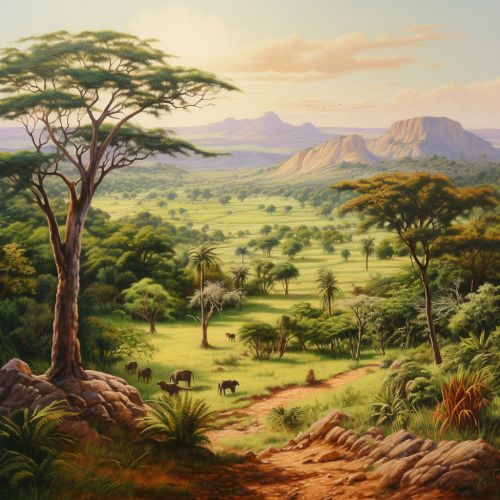Conservation in Africa
Introduction
Conservation in Africa refers to the protection, preservation, management, or restoration of wildlife and natural resources such as forests and water. This practice is significant due to Africa's biodiversity, which is under threat from human activities such as deforestation, poaching, and unsustainable agriculture. Conservation in Africa involves various strategies, including the establishment of protected areas, community-based conservation, and transboundary conservation efforts.


History of Conservation in Africa
The history of conservation in Africa is intertwined with the continent's colonial past. During the colonial period, European powers established the first protected areas in Africa, often displacing local communities in the process. These early conservation efforts were primarily focused on protecting game for hunting, rather than preserving biodiversity. However, in the post-colonial era, the focus of conservation shifted towards preserving biodiversity and involving local communities in conservation efforts.
Threats to Biodiversity
Africa's biodiversity is under threat from various human activities. Deforestation is a major issue, driven by logging, agriculture, and the demand for firewood. Poaching for the illegal wildlife trade also poses a significant threat to Africa's wildlife, particularly for species such as elephants and rhinos. Climate change is another major threat, with impacts such as changing rainfall patterns and increasing temperatures affecting wildlife and their habitats.
Conservation Strategies
Protected Areas
Protected areas are a cornerstone of conservation efforts in Africa. These areas, which include national parks, game reserves, and wilderness areas, provide a refuge for wildlife and help to preserve important habitats. However, protected areas face challenges such as underfunding, encroachment, and the impacts of climate change.
Community-Based Conservation
Community-based conservation involves local communities in the management and protection of natural resources. This approach recognizes that local communities often have a deep understanding of their local environment and can play a key role in conservation efforts. Community-based conservation can also provide benefits to local communities, such as income from tourism or sustainable use of natural resources.
Transboundary Conservation
Transboundary conservation involves the management of natural resources that span national borders. This approach is particularly relevant in Africa, where many wildlife populations migrate across national borders. Transboundary conservation efforts often involve the establishment of transboundary protected areas, also known as peace parks, and cooperation between neighbouring countries.
Future of Conservation in Africa
The future of conservation in Africa faces many challenges, but also opportunities. Increasingly, conservation efforts are recognizing the need to involve local communities and to integrate conservation with development goals. Technological advances, such as the use of drones for anti-poaching efforts, also offer new opportunities for conservation. However, ongoing threats such as climate change, population growth, and political instability pose significant challenges to conservation efforts.
